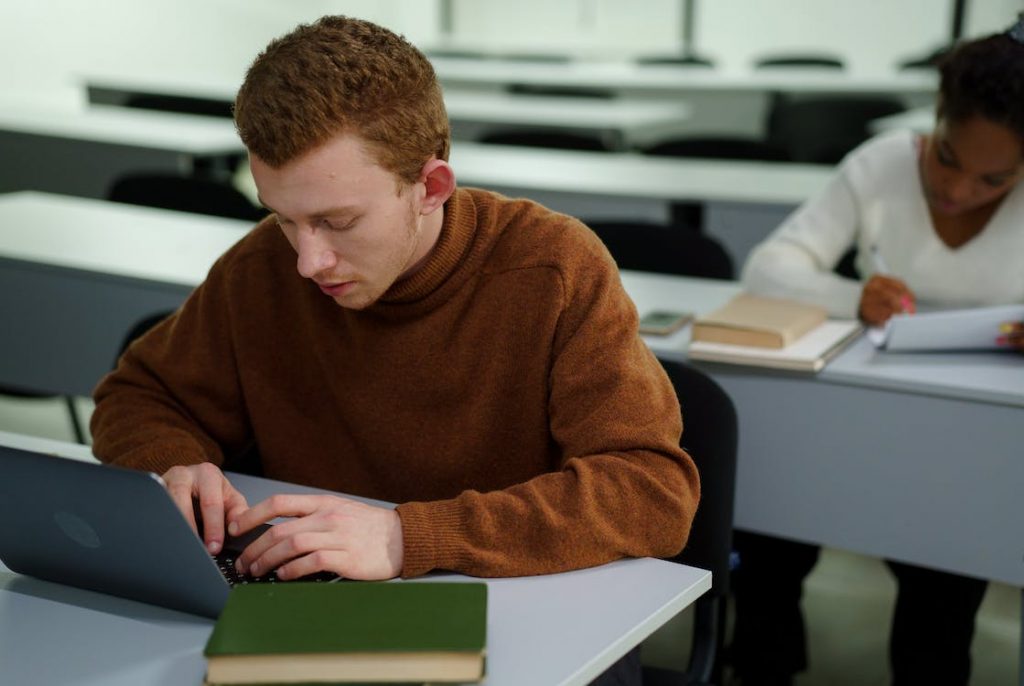The act of plagiarism, intentionally or inadvertently, can have long-lasting consequences for students, professionals, and writers alike. In today’s digital age, with the start of advanced anti-plagiarism software, the process of identifying copied or unoriginal material has become more advanced. But what happens when such software identifies plagiarism in your work? This article delves into the potential outcomes of detected plagiarism, the seriousness of this offense, strategies to avoid falling into the plagiarism trap, and a guide to choosing the right anti-plagiarism tools, like ours. Whether you’re a student, educator, or professional writer, understanding the gravity of plagiarism and how to steer clear of it is vital.
Who checked your paper?
When it comes to checking papers for plagiarism, the consequences largely depend on who is doing the checking:
- Anti-plagiarism software. Many instructors use anti-plagiarism software that’s configured to automatically report any detected plagiarized content. This automation can potentially lead to direct consequences without any initial feedback from the instructor.
- Instructor or professor. If your instructor or professor is the one who detects plagiarism, the implications might be more powerful. Typically, they check for plagiarism after the final version of the paper has been submitted. This often means you won’t have the chance to revise and remove the plagiarized content. To sidestep such situations in the future, always run your paper through anti-plagiarism software before handing it in.

The importance of detection
Understanding the consequences of plagiarism detection is crucial. Here’s what you need to know:
- Before final submission. If plagiarism in your paper is detected before its final submission, you might face multiple challenges.
- Required reporting. Many educational institutions have policies in place that need all incidents of plagiarism to be reported.
- Potential punishments. Depending on the severity and context, you might receive lower marks or grades. For significant offenses, like in a thesis or dissertation, your diploma could be at risk of cancellation.
- Chance to make things right. In some fortunate scenarios, students may be given the chance to check their work again, fix the plagiarized sections, and resubmit.
- Automated detection. It’s worth noting that certain anti-plagiarism software tools, especially those used by educators, can automatically detect and report plagiarized content.
It’s clear that plagiarism has far-reaching implications that go beyond academic integrity. Not only can it threaten one’s academic standing, but it also speaks volumes about one’s ethics and professionalism. Being careful when creating original content and regularly checking one’s work using dedicated anti-plagiarism tools can save students from these potential traps. As we delve deeper into the subject, understanding the tools and methods to prevent plagiarism becomes even more crucial.
Three potential outcomes of detected plagiarism
In the realm of academic and professional writing, plagiarism is a serious offense that can have various consequences. Below, we’ll delve into three potential outcomes of detected plagiarism, highlighting the direct consequences, long-term effects, and ways to proactively address the issue.
Case #1: Getting caught and reported
Being caught and facing a report can lead to:
- Rejection of your paper or a significant downgrade.
- Probation or expulsion from your university.
- Legal action by the author you plagiarized from.
- Violation of criminal law (subject to local or national regulations), potentially starting an investigation.
Case #2: Future implications
Even if you weren’t caught when submitting your paper, the consequences of plagiarism can manifest later:
- Someone, years down the line, might check your work with anti-plagiarism software, revealing plagiarized content.
- Plagiarism from the past, which contributed to earning a diploma or degree, could lead to its cancellation. This could happen even 10, 20, or 50 years after the fact.
Case #3: Proactive steps
Taking preventive steps against plagiarism is essential for supporting academic and professional integrity. Here’s why:
- Using anti-plagiarism tools. Regularly checking your papers with anti-plagiarism software provides your work’s authenticity. If you’re already doing this, kudos to you!
- Ensuring future success. By actively avoiding plagiarism, you safeguard your academic and professional reputation.
It’s crucial to understand that relying on luck or oversight (as seen in Cases #1 and #2) is risky. Instead, being proactive with anti-plagiarism steps helps prevent future issues.

Understanding plagiarism
Plagiarism, while often dismissed as a minor problem by some, has profound consequences both for the original authors and those found guilty of it. To fully understand its importance, it’s vital to understand its seriousness and the steps to prevent it. In the following sections, we’ll delve into the seriousness of plagiarizing, the harm it can cause, and practical steps to ensure your work stays authentic and respectful of others’ intellectual efforts.
The seriousness of plagiarism
Many individuals fail to get the full scope of damage caused by plagiarism. Particularly among students, plagiarism often appears as an escape route when they can’t produce original work. They may resort to copying or piracy due to various unexpected circumstances or mere laziness. To many, the consequences may seem insignificant with the mindset: ‘So what?’ However, the impact on the original author is often overlooked.
Consider this:
- The original author invested significant time and effort into preparing their article, report, essay, or other content.
- They ensured their work was of the highest quality.
- Being robbed of credit for their effort is not just disappointing but downright insulting.
- Using someone else’s work as a shortcut not only reduces the value of the original work but also tarnishes your own reputation.
These points underscore the primary reasons why plagiarism is harmful.
How to avoid plagiarism
Our foremost advice? Don’t plagiarize! However, understanding that accidental overlaps can happen, it’s crucial to know how to prevent unintentional plagiarism. Here’s how:
- Citation. Always cite your sources. Universities, colleges, and high schools have set guidelines for citation to avoid plagiarism. Make it a habit to stick to these guidelines.
- Paraphrasing. If you’re taking information from another report or document, confirm you’re not just copy-pasting. Instead, paraphrase the content, putting it in your own words. This reduces the risk of direct plagiarism, and besides, editors, teachers, and lecturers can easily spot copied content.
- Use anti-plagiarism tools. Invest some time in finding reputable anti-plagiarism websites or software. These tools, often used by educational institutions, help identify and fight plagiarism efficiently.
Being proactive in these steps not only helps in avoiding plagiarism but also guarantees the authenticity and originality of your work.
Penalties for plagiarism
The consequences of plagiarism vary based on context and difficulty. While some instances might go unnoticed, it’s crucial to understand that the vast majority are detected, leading to serious consequences. Here are some of the most common penalties:
- Lowered grades. Plagiarized assignments can result in receiving significantly reduced marks or even failing grades.
- Invalidation of diplomas or awards. Your achievements might be nullified if found to have been earned through plagiarized work.
- Suspension or expulsion. Academic institutions may suspend or permanently expel students found guilty of plagiarism.
- Damaged reputation. Beyond institutional penalties, plagiarism can spoil one’s academic and professional reputation, leading to long-term consequences.
The risks associated with plagiarism far overshadow any perceived short-term benefits. It’s always better to produce original work or give appropriate credit where it’s expected.
Selection of anti-plagiarism tools
Navigating the digital landscape needs powerful tools to detect and prevent plagiarism. In this section, we’ll consider the importance of selecting the right anti-plagiarism software and highlight the standout features of our platform.
Choosing the right software
Every anti-plagiarism software comes with its own set of advantages and disadvantages. Let’s explore what kind of software is best suited for your needs, and why Plag might be the ideal choice:
- Accessibility. If you need an anti-plagiarism web tool that’s always available…
- No storage requirements. Doesn’t take up space on your PC.
- Platform compatibility. Works seamlessly with Mac, Windows, Linux, Ubuntu, and other platforms.
Then, our platform is your go-to solution. The best part? You don’t even need to pay to access one of the best plagiarism-checking tools online.
Experience its effectiveness firsthand. Sign up for free, upload a document, and start a plagiarism check.

Why our platform stands out
Our platform offers a wide range of unique features that set it apart in the anti-plagiarism industry:
- Multilingual capability. Unlike other tools, Plag is genuinely multilingual. It’s adept at detecting and analyzing content in over 125 different languages, making it invaluable for students worldwide.
- Universal user base. Both business professionals and academics stand to benefit greatly from our plagiarism detector.
- Detailed analysis. After scanning your document, our platform doesn’t just stop at detection. You can view detailed results online or export them as a PDF for future reference. The reports highlight plagiarized content, ensuring easy identification.
- Tutoring services. Beyond plagiarism detection, we also offer tutoring services to improve your writing skills and provide insights on a range of topics.
Conclusion
| In the digital age, plagiarism’s consequences resonate strongly in both academic and professional spheres. The rise of refined detection tools underscores the need for real content. However, beyond detection lies the essence of understanding and education. With tools like ours, users are not just warned about overlaps but are also guided towards originality. It’s more than just avoiding plagiarism; it’s about promoting integrity in every piece we write. |
